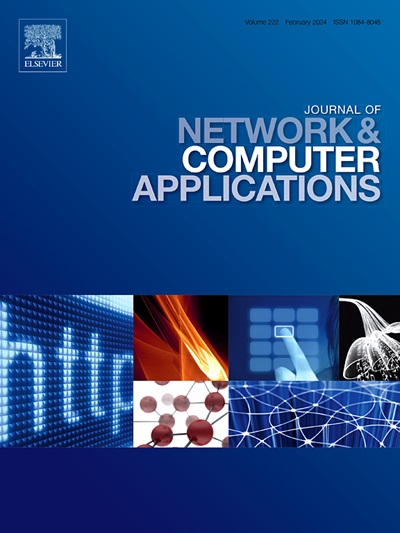A secure and quality of service-aware solution for the end-to-end protection of IoT applications
IF 8
2区 计算机科学
Q1 COMPUTER SCIENCE, HARDWARE & ARCHITECTURE
引用次数: 0
Abstract
Internet of Things (IoT) applications increasingly rely on lightweight publish–subscribe protocols (e.g., MQTT) to exchange a considerable amount of sensitive data. However, such data are often threatened by external attackers, malicious insiders, and honest but curious Edge and Cloud providers. Typical security mechanisms — such as Transport Layer Security (TLS) or centralized data authorization management — may expose messages to intermediate nodes and fail to enforce Access Control (AC) policies without relying on (sometimes missing) fully trusted agents. Furthermore, when security mechanisms are in place, they should consider the trust assumptions (e.g., on the presence of certain attackers) and meet the performance goals (e.g., low latency, high scalability) relevant to the underlying scenario. In this paper, we propose a security mechanism based Cryptographic Access Control (CAC) that integrates decentralized AC enforcement with end-to-end protection (in terms of data confidentiality and integrity) for IoT applications employing publish–subscribe protocols. By building on previous work, we also formalize an optimization problem to strike the best possible balance between security and quality of service by fine-tuning the deployment of our security mechanism accordingly. We showcase the benefits of the optimization problem in three different scenarios for IoT applications: Remote Patient Monitoring, Cooperative Maneuvering, and Smart Lock. Finally, our open-source proof-of-concept named CryptoAC demonstrates the feasibility of our security mechanism: a thorough performance evaluation reveals that CryptoAC achieves higher scalability than TLS under multi-publisher workloads and a practical level of overhead for key management and policy updates.
为物联网应用的端到端保护提供安全、优质的服务感知解决方案
物联网(IoT)应用越来越依赖于轻量级的发布-订阅协议(例如MQTT)来交换大量敏感数据。然而,这些数据经常受到外部攻击者、恶意内部人员以及诚实但好奇的边缘和云提供商的威胁。典型的安全机制——例如传输层安全(TLS)或集中式数据授权管理——可能会将消息暴露给中间节点,并且如果不依赖(有时缺少)完全可信的代理,则无法强制执行访问控制(AC)策略。此外,当安全机制到位时,它们应该考虑信任假设(例如,存在某些攻击者),并满足与底层场景相关的性能目标(例如,低延迟、高可伸缩性)。在本文中,我们提出了一种基于加密访问控制(CAC)的安全机制,该机制将分布式AC强制与采用发布-订阅协议的物联网应用的端到端保护(在数据机密性和完整性方面)集成在一起。在先前工作的基础上,我们还形式化了一个优化问题,以便通过相应地微调安全机制的部署,在安全性和服务质量之间取得最佳平衡。我们在三种不同的物联网应用场景中展示了优化问题的好处:远程患者监护、协同机动和智能锁。最后,我们的开源概念验证CryptoAC证明了我们安全机制的可行性:全面的性能评估表明,在多发布者工作负载下,CryptoAC实现了比TLS更高的可伸缩性,并且在密钥管理和策略更新方面实现了实际水平的开销。
本文章由计算机程序翻译,如有差异,请以英文原文为准。
求助全文
约1分钟内获得全文
求助全文
来源期刊

Journal of Network and Computer Applications
工程技术-计算机:跨学科应用
CiteScore
21.50
自引率
3.40%
发文量
142
审稿时长
37 days
期刊介绍:
The Journal of Network and Computer Applications welcomes research contributions, surveys, and notes in all areas relating to computer networks and applications thereof. Sample topics include new design techniques, interesting or novel applications, components or standards; computer networks with tools such as WWW; emerging standards for internet protocols; Wireless networks; Mobile Computing; emerging computing models such as cloud computing, grid computing; applications of networked systems for remote collaboration and telemedicine, etc. The journal is abstracted and indexed in Scopus, Engineering Index, Web of Science, Science Citation Index Expanded and INSPEC.
 求助内容:
求助内容: 应助结果提醒方式:
应助结果提醒方式:


